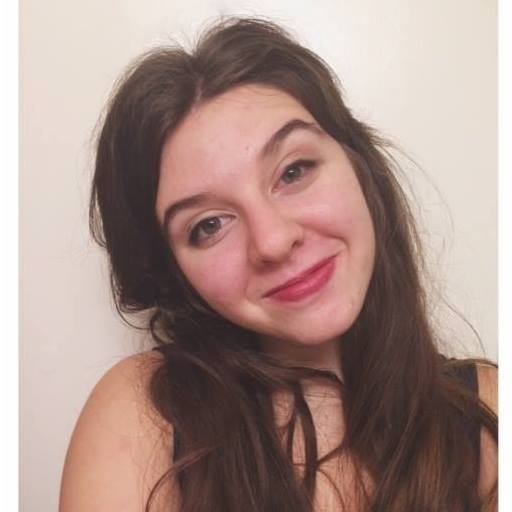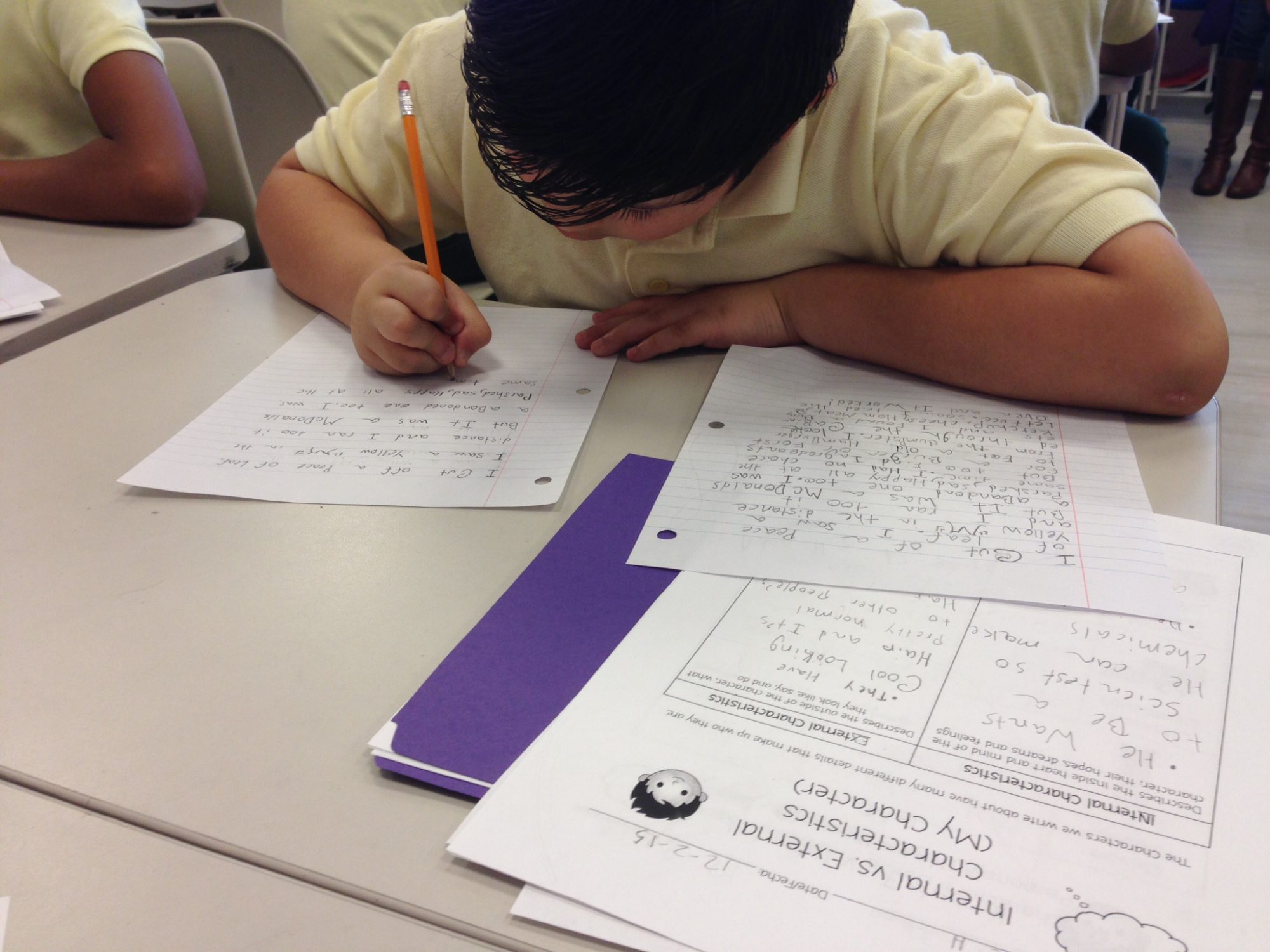By Emily Benn, 826DC Intern, Spring 2015/Fall 2016
The SEED School of Washington, DC
To launch a discussion on identity and intersectionality, students participated in activities that encouraged them to think about themselves as multi-faceted individuals and writers with unique perspectives. To begin these activities, 826DC writing mentors and student writers wrote self-describing characteristics on sticky notes. Students considered various aspects of their identity: “I’m female,” “I’m black,” “I’m Christian,” “I love fashion,” “I’m a singer,” “I’m creative,” “I’m an athlete,” “I’m an actor” and “I have many siblings” are examples of characteristics that students wrote to describe who they are and the various parts of their identity.
Students’ individual identities were compiled into word clouds, a collage of students’ words, and the presented to students as a continual visual reminder of the multiplicities of identity. Students saw the complexity of their identities represented on paper while also becoming more aware of the other diverse community members that exist in their classroom.

Emily Benn interned with 826DC in Spring of 2015 and again in Fall of 2016. She is a recent graduate of the George Washington University where she double majored in English and Human Services. Ultimately, Emily hopes to pursue a career in secondary education. In her free time, Emily enjoys curating music for her GW radio show, cooking with friends, and dancing.
By Lara Fishbane, 826DC Intern, Spring 2017
Bruce Monroe @ Park View Elementary
In addition to discussing their word clouds, writers at Bruce Monroe @ Park View Elementary School participated in a “step in step out” activity.
Intern Lara Fishbane sets the scene:
Students gather in a circle standing shoulder to shoulder. (826DC Programs Director) Lacey reads a question. Students are told to step forwards if it’s true. Some questions are easy: if you like cats, if you like dogs, if you live in a house. Others make students shift uncomfortably: if you don’t always have enough food to eat, if you feel unsafe where you live. The movements in and out of the circle begin to illustrate the complexities of identity to the students. They don’t know the term intersectionality, but each step forward and each one held back is showing the students how to piece theirs together. Intersectionality refers to the connections between our multiple identities–race, class, gender, sexual identity, ableism–and how these varying aspects of who we are cause us to be privileged or oppressed. It explains why the student who steps forward as a girl also steps forward to feeling unsafe where she lives. It explains why the student who steps forward as Hispanic may not step forward when asked if he sees people in TV and other media who look like him.
As students step forwards and back, thinking about how each question relates to his/her own identity, they’re also noticing how other students move. They notice that each student moves in a unique pattern because everyone comes from different backgrounds and experiences. The questions asked students to consider facets of their identity that they may have never thought about before. This was sometimes uncomfortable, but the discomfort reminded us that not everyone comes from equally privileged backgrounds.
After thinking about identity in a group context, students returned to their seats to begin piecing together identity heads with “I am” statements. This activity gave power to the students because they could write the aspects of their identity that they thought defined them, and not just the ones externally imposed on them. They could use as many sticky notes as they wanted, writing a different “I am …” on each one. At the end, students held their heads up, filled with their interests, their demographics, their communities. The cloud of sticky notes helped students visualize the multifacetedness of each of their identities. They was no singular “I am” statement that summarized their identity and each one was important in making the cloud.

Lara Fishbane is a senior at Georgetown University studying English and Economics. She is passionate about writing, education reform, and exploring the relation between the two. She’s excited to be working as a Publishing and Production intern with 826DC because she wants to help students express themselves through writing and create meaningful impact. When she’s not interning or studying, you’ll find Lara on long runs, hikes, or just lost in a book.
